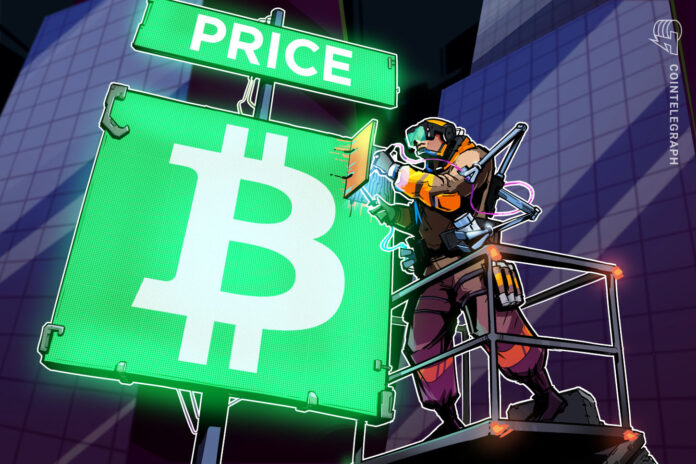Bitcoin (BTC) price broke above $22,500 on Jan. 20 and has since been able to defend that level — accumulating 40.5% gains in the month of January. The move accompanied improvements in the stock market, which also rallied after China dropped COVID-19 restrictions after three years of strict pandemic controls.
E-commerce and entertainment companies lead as the year-to-date market performers. Warner Bros (WBD) added 54%, Shopify (SHOP) 42%, MercadoLibre (MELI) 41%, Carnival Corp (CCL) 35% and Paramount Global (PARA) managed a gain 35% so far. Corporate earnings continue to attract investors’ inflow and attention after oil-producer Chevron posted the second-largest annual profit ever recorded, at $36.5 billion.
More importantly, analysts expect Apple (AAPL) to post a mind-boggling $96 billion in earnings for its 2022 on Feb. 2. The $2.3 trillion tech company results vastly surpasses the $67.4 billion profit that Microsoft (MSFT) reported in 2022. Strong earnings also help to validate the current stock valuations, but they do not necessarily guarantee a brighter future for the economy.
A more favorable scenario for risk assets came largely from a decline in leading economic indicators, including homebuilder, trucking surveys and contracting Purchasing Managers Index (PMI), according to Evercore ISI’s senior managing director, Julian Emanuel.
According to the research from financial services firm Matrixport, American institutional investors represent some 85% of the recent purchasing activity. This means large players are “not giving up on crypto.” The study considers the returns occurring during U.S. trading hours but expects the outperformance of altcoins relative to Bitcoin.
From one side, Bitcoin bulls have reasons to celebrate after its price recovered 49% from the $15,500 low on Nov. 21, but bears still have the upper hand on a larger time frame since BTC is down 39% in 12 months.
Let’s look at Bitcoin derivatives metrics to better understand how professional traders are positioned in the current market conditions.
Asia-based stablecoin demand approaches the FOMO region
The USD Coin (USDC) premium is a good gauge of China-based crypto retail trader demand. It measures the difference between China-based peer-to-peer trades and the United States dollar.
Excessive buying demand tends to pressure the indicator above fair value at 100%, and during bearish markets, the stablecoin’s market offer is flooded, causing a 4% or higher discount.

Currently, the USDC premium stands at 3.7%, down from a 1% discount two weeks prior, indicating much stronger demand for stablecoin buying in Asia. The indicator shifted gears after the 9% rally on Jan. 21, causing excessive demand from retail traders.
However, one should dive into BTC futures markets to understand how professional traders are positioned.
The futures premium has held a neutral stance since Jan. 21
Retail traders usually avoid quarterly futures due to their price difference from spot markets. Meanwhile, professional traders prefer these instruments because they prevent the fluctuation of funding rates in a perpetual futures contract.
The three-month futures annualized premium should trade between +4% to +8% in healthy markets to cover costs and associated risks. Thus, when the futures trade below such a range, it shows a lack of confidence from leverage buyers — typically, a bearish indicator.

The chart shows positive momentum for the Bitcoin futures premium after the basis indicator broke above the 4% threshold on Jan. 21 — the highest in five months. This movement represents a drastic change from the bearish sentiment presented by the futures’ discount (backwardation) present until late 2022.
Related: Bitcoin price is up, but BTC mining stocks could remain vulnerable throughout 2023
Traders are watching to see if the Fed broadcasts plans to pivot
While Bitcoin’s 40.5% gain in 2023 look promising, the fact that the Nasdaq tech-heavy index rallied 10% in the same period raises suspicions. For instance, the street consensus is a pivot on the Federal Reserve (FED) quantitative tightening policy at some point in 2023 — meaning interest rates would no longer be increased.
Bitcoin derivatives and stablecoin demand exited the panic levels but if the FED’s expected soft landing takes place, the risk of a recessionary environment will limit stock markets’ performance and hurt Bitcoin’s “inflation protection” appeal.
Currently, the odds favor bulls as leading economic indicators show a moderate correction — enough to ease the inflation but not especially concerning as solid corporate earnings confirm.
The views, thoughts and opinions expressed here are the authors’ alone and do not necessarily reflect or represent the views and opinions of Cointelegraph.
This article does not contain investment advice or recommendations. Every investment and trading move involves risk, and readers should conduct their own research when making a decision.
Hits: 0










